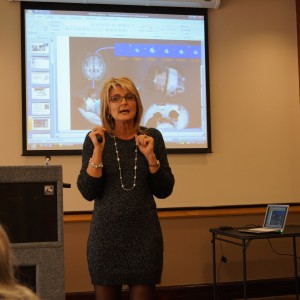As I have related before, there are other symptoms of Essential Tremor (ET) beyond the shaking of hands, head and voice. It is an area that requires much more research. In HopeNET’s groups, the issue of migraines has come up a number of times. In the meantime, my daughter who supposedly does not have ET has suffered badly from migraines. As my ET is hereditary, she & I had discussed the connection between ET & migraines a number of times. Then she found this article doing an internet search and forwarded it to me. It substantiates the connection between ET and migraines.
This raises another important issue of children who supposedly don’t have ET. Do all the children inherit ET to some degree? This question needs to be answered, and if so, what is the effect?
I welcome any comments you have.
Peter Muller
Executive Director
HopeNET
Higher prevalence of migraine in essential tremor: A case-control study
Yueqing Hu, Wenjing Tang, Ruozhuo Liu, Zhao Dong, Xiaoyan Chen, Meiyan Pan and Shengyuan Yu
Abstract
Background: The existence of an association between migraine and essential tremor has long been controversial. The prevalence of migraine in essential tremor patients was surveyed to explore the association between the two diseases.
Methods: A case-control clinical study was conducted to investigate the prevalence of migraine in 150 consecutive
essential tremor patients and in 150 matched controls without tremor. Detailed information about essential tremor
and migraine was obtained using a structured questionnaire at a face-to-face interview. Moreover, a functional variant of the dopamine receptor D3 gene (Ser9Gly, rs6280) was studied in 46 essential tremor patients with and without migraine using direct sequencing analysis.
Results: The prevalence of lifetime migraine in essential tremor patients was significantly higher than that in controls (22.0% vs. 12.7%; p¼0.035; odds ratio¼1.95; 95% confidence interval¼1.05–3.60). No significant difference was found in the migraine features between the essential tremor and control groups and most tremor characteristics were no different in essential tremor patients with and without migraine. A higher male prevalence of essential tremor patients without migraine was observed. Moreover, 44 of 46 (95.7%) essential tremor patients had the dopamine receptor D3 Ser9Gly variant, but no significant difference was found in the frequencies of the variant between essential tremor patients with and without migraine (87.5% vs. 100.0%; p¼0.22).
Conclusion: Our data suggest that essential tremor patients have a higher risk of lifetime migraine than do controls and the dopamine receptor D3 Ser9Gly variant may be lower in essential tremor with migraine than the general essential tremor patients.
Keywords
Essential tremor, migraine, dopamine receptor D3 gene, risk factor
Date received: 5 January 2014; accepted: 12 March 2014
Full Article



